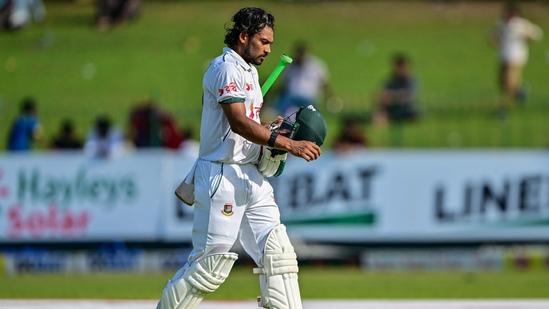- Advertisement -
Najmul Hossain Shanto has officially stepped down as the captain of Bangladesh’s Test cricket team following the recent defeat against Sri Lanka. The decision comes amid mounting pressure after a series of underwhelming performances, with the team struggling to find consistency in the longest format of the game. Shanto’s resignation marks a significant shift in Bangladesh’s leadership as the cricket board looks to recalibrate its strategy ahead of upcoming international fixtures.
Najmul Hossain Shanto Resigns as Bangladesh Test Captain Following Series Loss to Sri Lanka
Najmul Hossain Shanto has officially stepped down from his role as captain of Bangladesh’s Test cricket team following the recent series defeat against Sri Lanka. The decision came after intense scrutiny from fans and cricket analysts alike, amid calls for leadership change to revitalize the team’s performance. Under Shanto’s captaincy, Bangladesh struggled to find consistency, culminating in a comprehensive series loss that exposed several weaknesses in strategy and execution.
During his tenure, Shanto managed several highs and lows; however, the inability to secure a win in the Sri Lanka Test series proved pivotal. The Bangladesh Cricket Board (BCB) is expected to announce an interim captain shortly while considering long-term leadership options. Below is a quick summary of Shanto’s captaincy record in Tests:
| Matches | Wins | Losses | Draws | Win % |
|---|---|---|---|---|
| 12 | 2 | 7 | 3 | 16.7% |
- Captaincy Duration: 1.5 years
- Key Challenges: Consistent batting failures, bowling lack of penetration
- Next Steps: BCB strategizing on leadership and team rebuilding
Analyzing the Impact of Leadership Change on Bangladesh Cricket Team Dynamics
The departure of Najmul Hossain Shanto as the Test captain signals a pivotal moment for Bangladesh cricket, especially regarding team cohesion and strategic direction. Under his leadership, the squad faced numerous challenges, notably in adapting to diverse playing conditions abroad. Analysts believe that this change could rejuvenate the dressing room atmosphere, providing an opportunity to recalibrate tactics and empower emerging players. However, the transition also carries inherent risks, including potential disruptions in communication and role clarity among senior team members.
Key factors shaping the impact of this leadership change include:
- Team morale: A new captain could inject fresh energy, boosting confidence after a string of setbacks.
- Strategic adjustment: Shift in captaincy often leads to reconsideration of field placements, batting orders, and bowling rotations.
- Player development: Opportunities might arise for younger talents to assume larger roles under new guidance.
- Management dynamics: Interaction between coaching staff and players may evolve, affecting training focus.
| Captaincy Period | Matches | Win % | Key Challenges | |
|---|---|---|---|---|
| Najmul Hossain Shanto (2022-2024) | 14 | 28% | Consistency & Overseas Performance | |
| Preceding Captains (2018-2022) | Preceding Captains (2018-2022) | 30 | 35% | Leadership Transitions & Team Form |
| Focus Area | Action Points |
|---|---|
| Youth Development | Expand first-class opportunities, talent scouting |
| Leadership Support | Form tactical advisory group, mentor new captain |
| Mental Conditioning | Sports psychology sessions, increased focus on resilience |
| Practice & Preparation | Match simulations, scenario-based training drills |
- Insights and Conclusions
Najmul Hossain Shanto’s decision to step down as Bangladesh’s Test captain marks a significant moment for the national team following their recent defeat to Sri Lanka. As Bangladesh looks ahead, the focus will shift to identifying new leadership capable of steering the team through upcoming challenges and rebuilding confidence in the longest format of the game. The cricketing community now awaits the Bangladesh Cricket Board’s next move as they plan for the future of Test cricket in the country.
- Advertisement -


